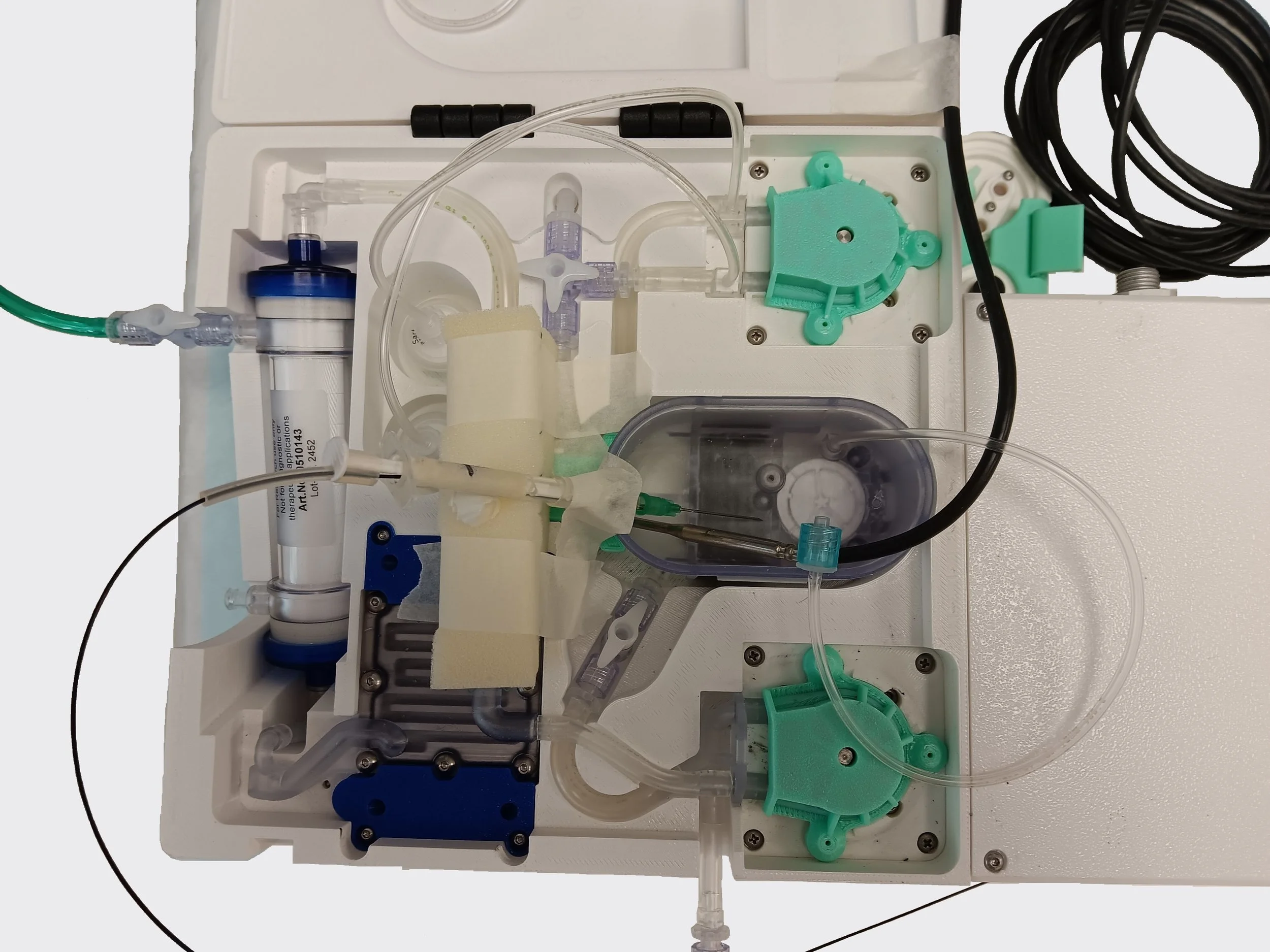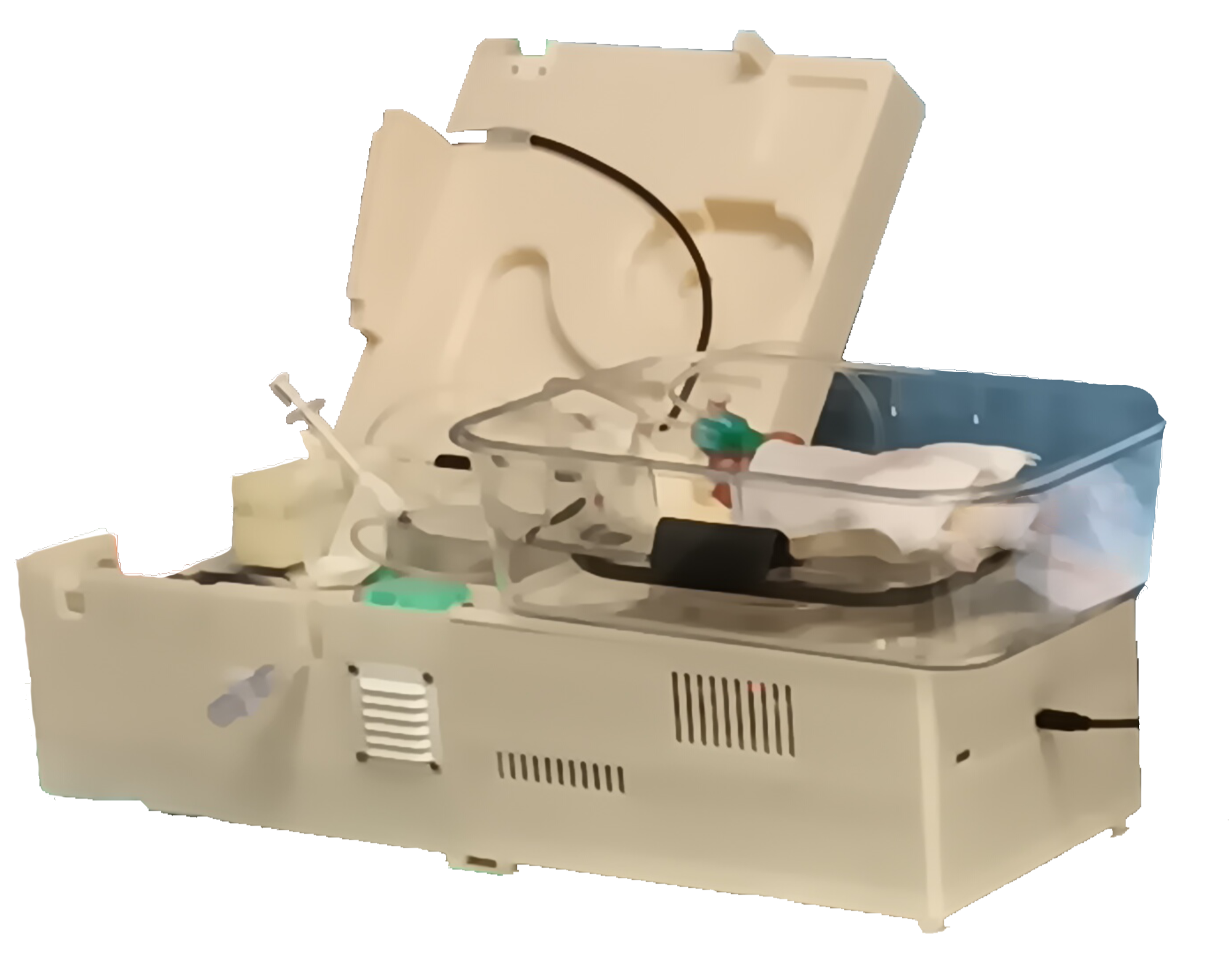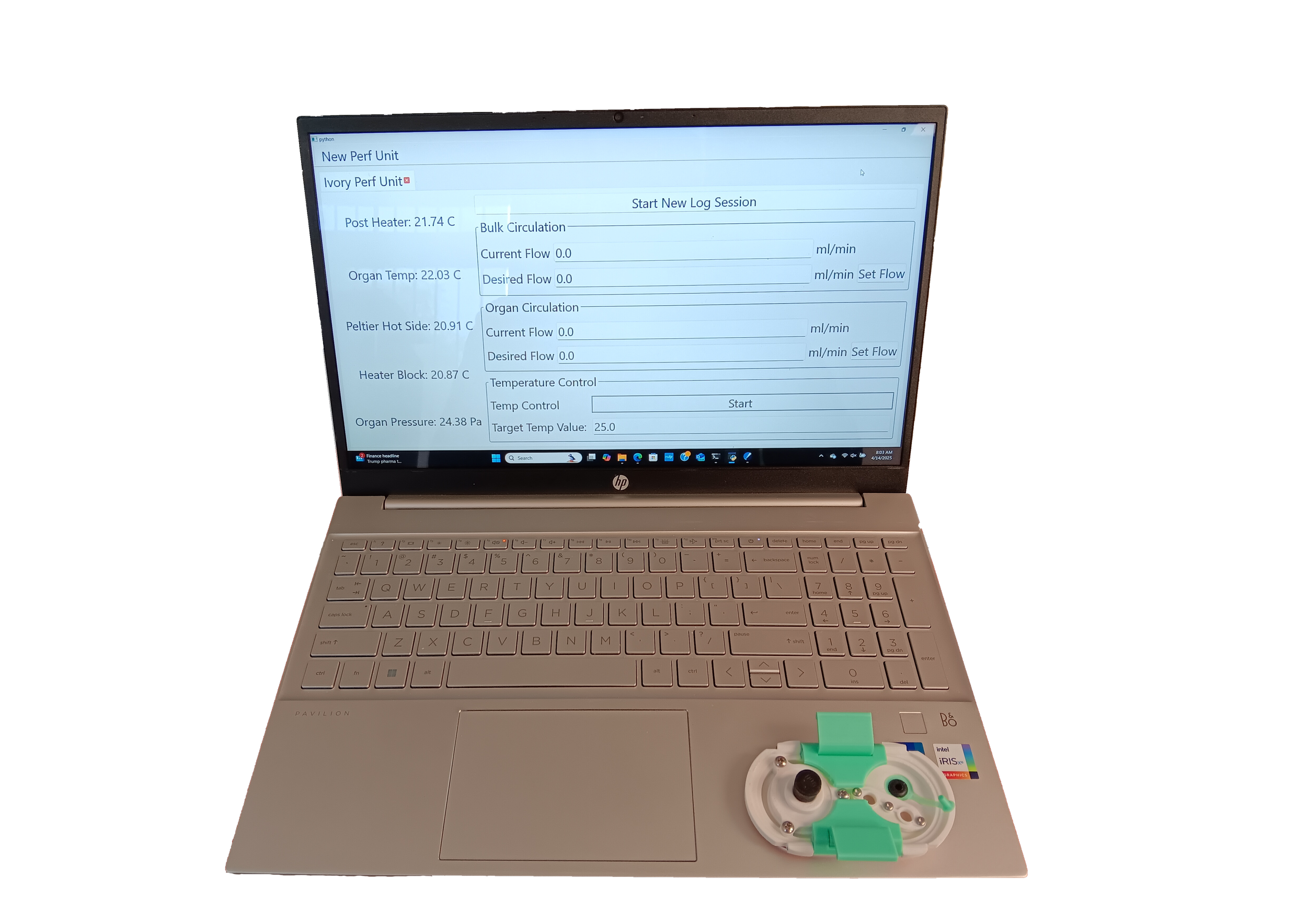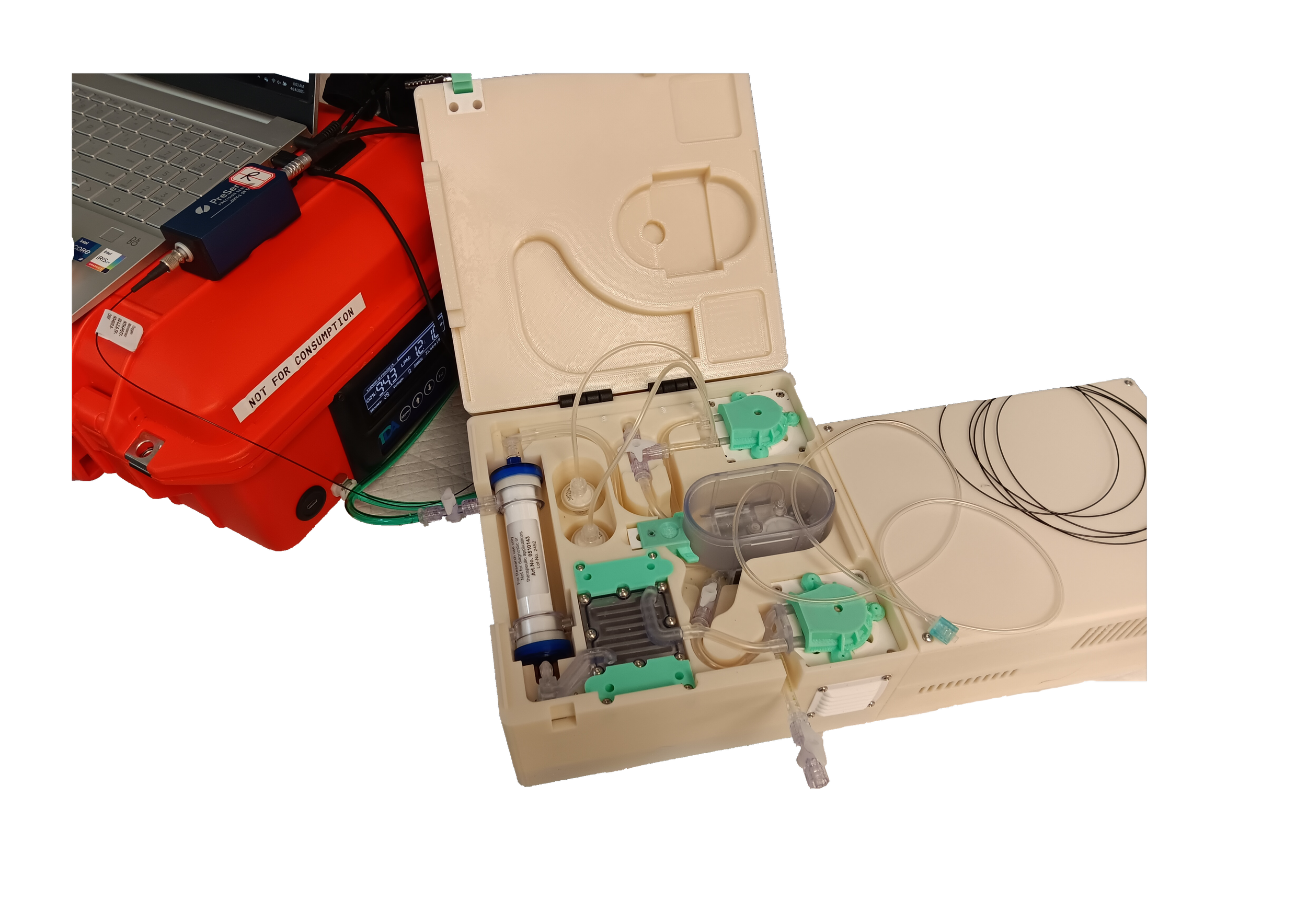Perfusion Machine
The standard tissue preservation technique, static cold storage, slows the cell's metabolism, and hence its ischemic injury, by cooling it to 4oC. An alternative which has shown great promise in extending shelf life, repairing damaged tissues, and improving transplantation outcomes is normothermic machine perfusion (NMP). Instead of slowing the metabolism via cold temperatures, NMP prevents (and even reverses) ischemic injury by maintaining the tissue's normal metabolic function ex vivo while providing nutrients and oxygen. NMP allows medical personnel to store transplantable tissues while maintaining metabolic activity and to store and transport tissues for longer periods of time compared to standard static cold storage. Additionally, it allows medical personnel to evaluate the tissue's viability and provide the tissue with time to undergo repair before transplantation, increasing the potential supply of transplantable tissues and organs.
Due to the increased use of IEDs, which are often detonated at ground level and explode upward, the number of injuries to the lower extremities, including to the genitourinary (GU) system, of soldiers has greatly increased. Injuries to the GU system, while often not fatal, cause severe side effects including incontinence, sexual side effects, loss of reproductive capabilities, and hormonal problems, all of which can lead to psychological disorders that affect both the wounded warriors and their families. Normothermic machine perfusion designed to preserve GU tissues and optimized for military use will significantly improve the quality of life of soldiers who suffer injuries to their GU system.
Most current perfusion systems use blood as the perfusate, which is a problem for military applications due to limited blood supply and problems with blood type matching. Also, those systems are bulky, non-portable, designed to work within the well controlled environment of a laboratory or hospital, and they require constant monitoring. For normothermic machine perfusion to improve transplantation outcomes of wounded soldiers, two interrelated technologies need to be developed: (i) A perfusate which can oxygenate the tissue without relying on blood, and (ii) a perfusion machine which is portable and rugged enough to withstand the rigors of a battlefield hospital.
TDA Research, Inc. (TDA) in collaboration with our partner, Southwest Research Institute (SwRI) has developed a machine perfusion system that can preserve and repair GU tissue without relying on blood as the perfusate and that is portable and ruggedized for military use. The perfusate uses nano-encapsulated hemoglobin based oxygen carriers (HBOC) to transport oxygen throughout the tissue's vasculature without the deleterious effects of bare hemoglobin (such as vasoconstriction and toxicity) or the logistical drawbacks of blood. Additionally, we are designing a portable ruggedized perfusion machine which will work under a wide variety of environments, is low weight, small, man portable, and automated via a suite of sensors.
Uses an ex vivo system to deliver an oxygenated perfusate to a tissue sample or organ to preserve metabolic activity, and thus potentially repair tissue.
Offers a solution to GU tissue preservation by supporting the survival of all types of tissues.
The key to our novel GU perfusion technology will be the combination of a ruggedized, portable machine perfusion system for use in battlefield environments, and a novel perfusate being developed by SwRI.
SwRI’s perfusate contains a novel, universal oxygen carrier system that avoids the need to use actual blood as the perfusate, which is in short supply in a battlefield situation and also presents problems of blood-type matching and subsequent immune-rejection of the transplanted tissue.
The use of a perfusate with a universal oxygen carrier is essential to a successful normothermic or sub-normothermic machine perfusion system for preservation of GU tissue.
The perfusate studied in this work mimics blood, providing nutrition and oxygen to maintain the normal metabolism of GU tissue.




